The hamlet of Bambanglipuro is an archetypal village in the heartland of Java; rows of traditional houses and small mosques interspersed with patches of paddy fields line both sides of the country road we take from the city of Yogyakarta, or Jogja for short. Our driver, a man of about the same age as James and I, hails from the city of Kediri in East Java but has been living in Jogja for quite some time. On this particular drive, he must navigate with the help of Google Maps. “I have never been to this church before, but I think I know where it is,” he tells us in an assuring tone.
Ganjuran Church, named after the area where it was built, is a Roman Catholic church which was constructed in 1924 by Dutch brothers Joseph and Julius Schmutzer. Co-owners of one of many sugar factories in Java, the siblings commissioned the church, lots of schools, and a clinic serving the local community – many of its members worked at the factory. So why are we going all the way there, some 20 km away from the city center, just to see a church in a small village?
* * *
James and I walk through a gate made from andesite, a type of volcanic rock that was the preferred building material to construct a myriad of Hindu and Buddhist temples in Java more than a thousand years ago. However, instead of the usual depiction of Kala (the menacing face of a giant to ward off evil spirits), we see a dove and a figure on top of it, presumably God the Father, wearing a Javanese headdress. What an intriguing first impression!
There are dozens of pilgrims and worshipers here, but the ambiance is palpably peaceful with the occasional gentle breeze of fresh air caressing our faces. We hear solemn harmonious voices faintly emanating from inside the church’s main structure, unmistakably Javanese in architectural style with the distinctive peaked roofs. We walk closer to where the sound comes from, and find an airy nave underneath among some of the most ornately-decorated ceilings I’ve ever seen. A small group of young men and women appear to be practicing a few songs, maybe for the day’s service or an upcoming important event. Everyone sings in tune, in different keys, creating layers of depth that result in auditory beauty.
Placed against the back wall, and facing the singers, is a sculpture that got my attention earlier this year. From a distance its dim sheen makes it look as though it was carved from ivory, but it’s the outline that makes it familiar to my eyes, which were astonished by an image of Jesus wearing a Javanese headdress and donning traditional costume on my Instagram feed months ago. I walk closer to it while James records chapter after chapter of the choir’s rehearsals on his camera and phone. The sign below the statue reads Sang Maha Prabu Jesus Kristus, or Jesus Christ Lord of Lords in Javanese with loanwords from Sanskrit, followed by Pangeraning Para Bangsa, King of All Nations. Meanwhile on my right hand side, across the altar, lies an equally fascinating depiction of another central figure in Catholicism: Mother Mary. She also wears Javanese traditional dress and sits atop a pedestal with floral patterns around its base, reminiscent of how a goddess was often portrayed back in the day when Java was still predominantly Hindu.
The Javanese are known for their ability to adopt new cultures without abandoning the old ones. Rather, what often happens is the assimilation of the old and the new while the culture itself remains intrinsically Javanese. From the seventh-century Hindu temples of the Dieng Plateau, to the colossal Mahayana Buddhist Borobudur temple from the ninth century, the eclectic 16th-century mosque in Kudus, and Ganjuran Church, in spite of the different gods or deities these places of worship were dedicated to, they share one thing in common: all of them have incorporated elements of Javanese traditions, as well as aspects of the newly-dominant culture and the one it replaced.
A short walk from the church’s main congregation hall is a structure that resembles an ancient Javanese Hindu temple. However, instead of housing a lingga and a yoni (both symbolizing Shiva, one of the Trimurti – the triple deity of supreme divinity in Hinduism), inside is Jesus, also dressed in Javanese costume. Pilgrims sit either on plastic chairs or on the floor in front of the ‘temple’ in complete silence, while a few others sit cross-legged on a raised platform before the stairs that lead up to the entrance to the temple’s sanctum.
Along the walls surrounding this inner section of the church compound are reliefs depicting the Stations of the Cross, telling the story of Jesus’s final hours on the day of crucifixion. Unsurprisingly, each and every character is depicted wearing local dress with apparent influences from Hinduism. This is another fine example of the plasticity of Javanese culture which can be molded into different shapes without losing its characteristics.
So why did we come? A Christian place of worship in a predominantly-Muslim area, where Jesus and Mary are depicted donning Javanese dress, and whose main hall takes the form of a pendopo (a Javanese pavilion-like structure) with a small ‘temple’ next door is certainly not your typical church.

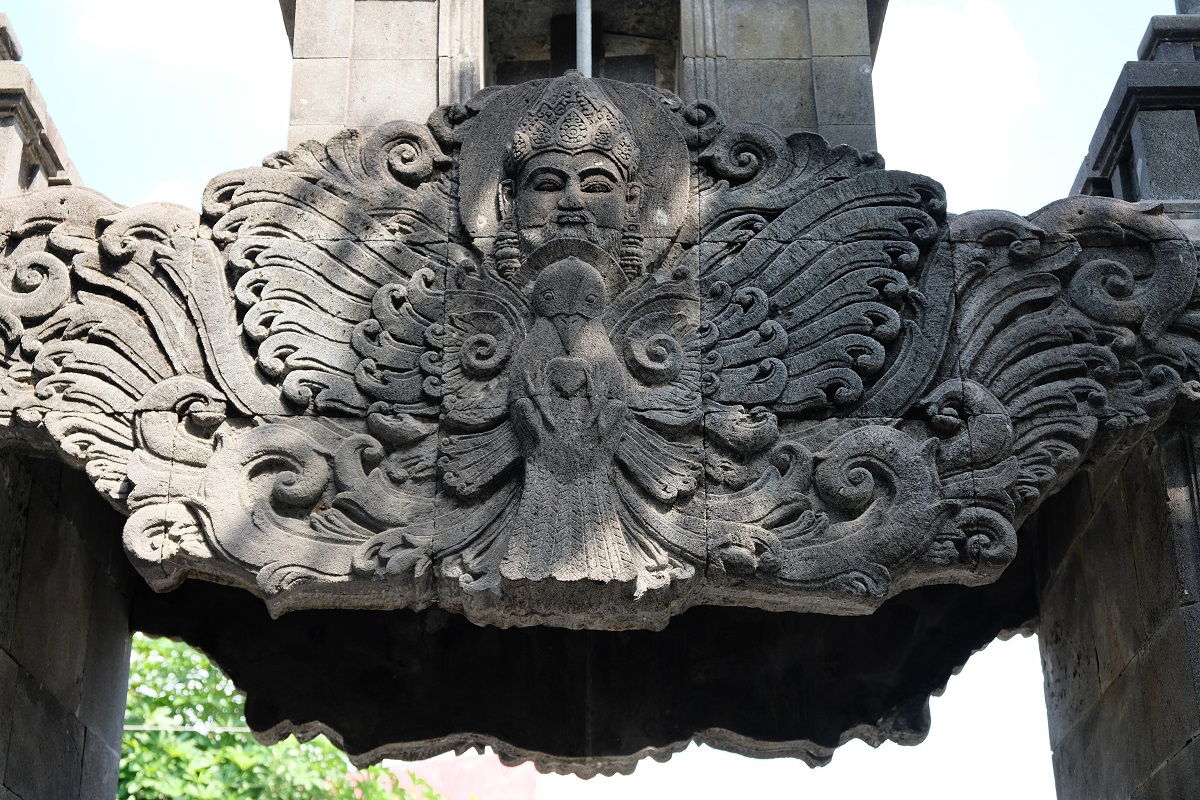

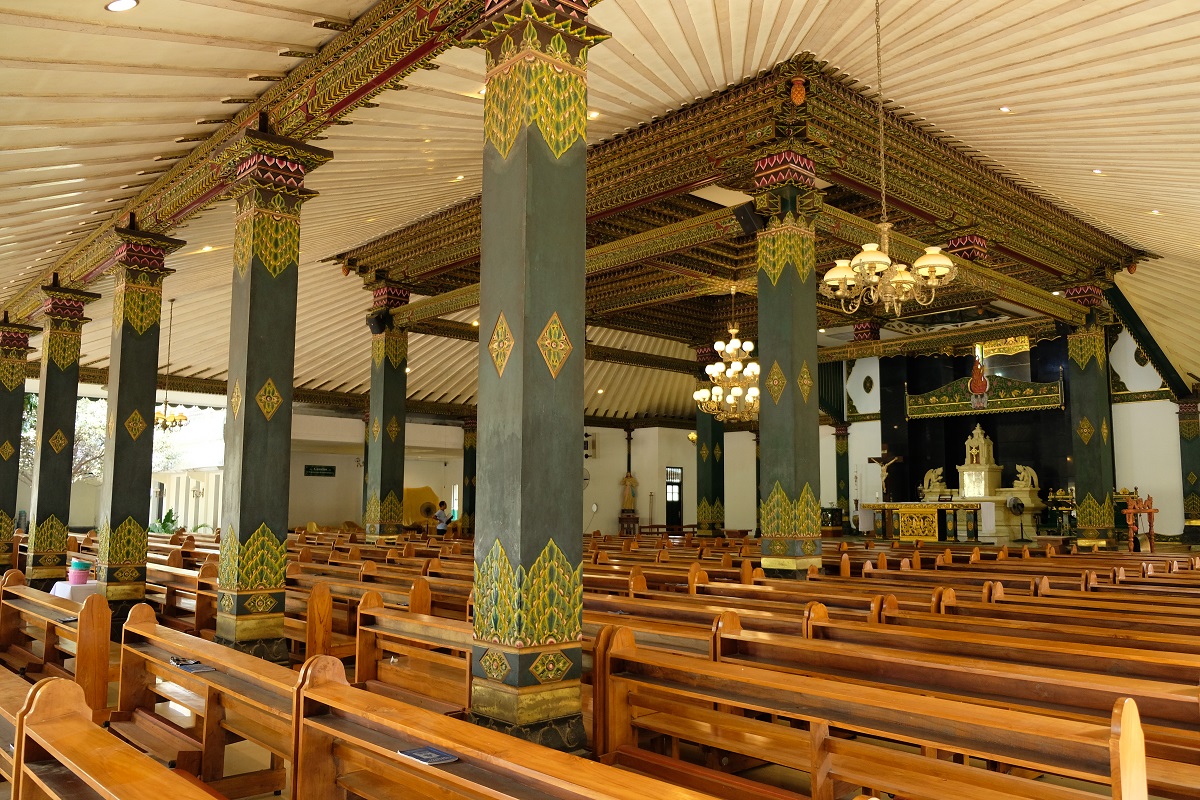

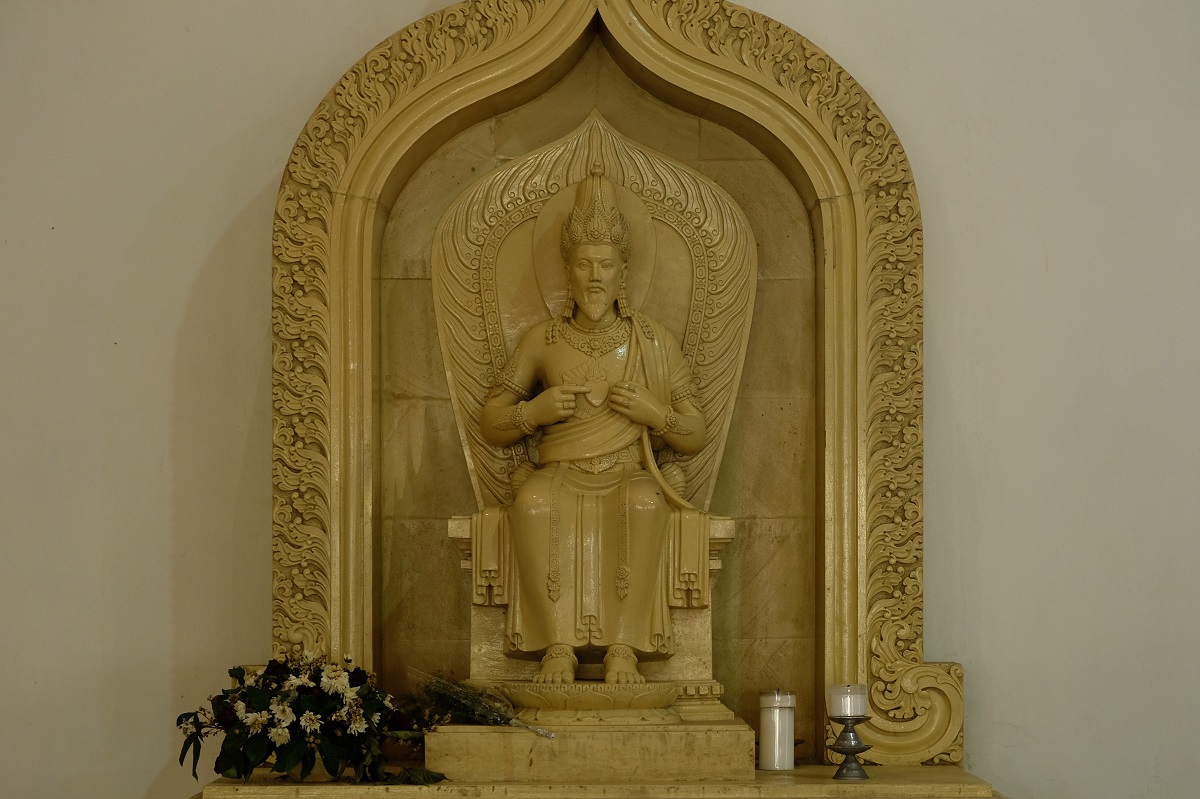



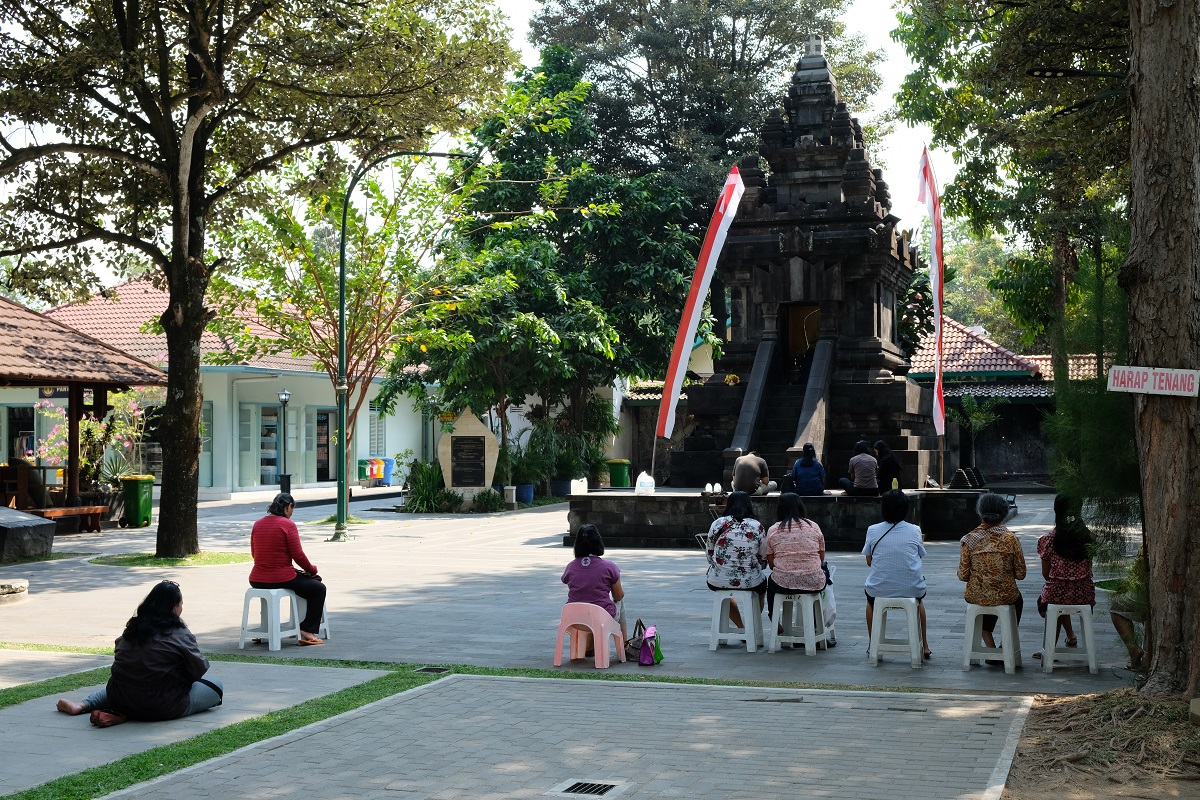

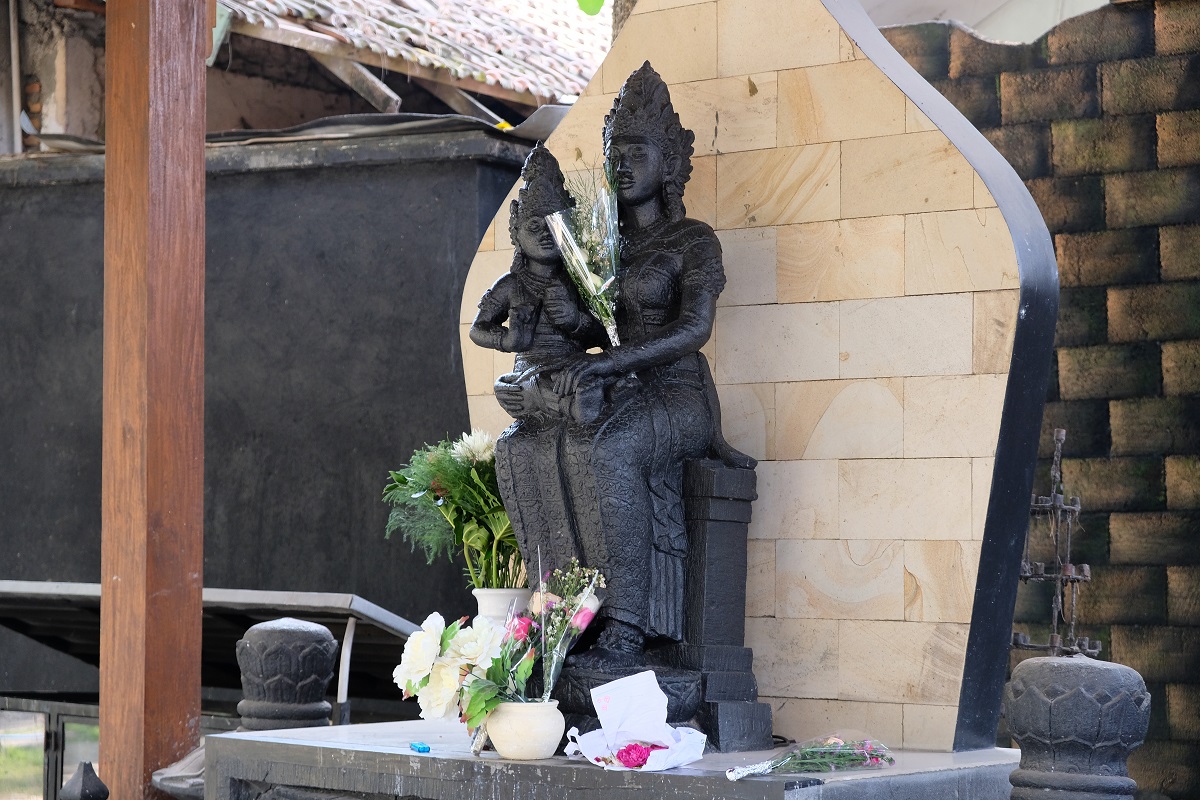
Fascinating
LikeLiked by 1 person
It’s a really unique place. Thanks for reading!
LikeLiked by 1 person
It’s like the mosque of Demak, mas. This is perfect acculturation.
LikeLiked by 1 person
True. That’s another fine example of cultural assimilation in Java.
LikeLike
This is quite an interesting blend of cultures and religion.
LikeLiked by 1 person
Being there and seeing this fascinating blend in the shape of a church was truly unforgettable.
LikeLike
As usual, excellent frames and exposures bring the church right to the reader’s doorsteps.
LikeLiked by 1 person
Thanks, Umashankar. I wish I recorded the choir practice as well, so I could share the video with others. Unfortunately this idea only came after we left the church.
LikeLike
That is just such an impressive place, the devotion is just beautifully captured by your images and words. Thank you for sharing.
LikeLiked by 1 person
It really was a special place, a testament to religious tolerance in Indonesia which has been under threat in recent years (fortunately the previously silent majority has begun to speak up against those who wish to turn the country into a hostile place for minority). Thank you for reading, Cornelia.
LikeLiked by 1 person
Thank you Bama for your kind response, more power to you for such an article and more power to Indonesia.
LikeLiked by 1 person
Thanks for sharing your journey, that’s a very interesting place.
LikeLiked by 1 person
You’re most welcome. Thank you for reading!
LikeLike
Not hard to figure out why. I recently saw a church in Taiwan that I thought was a Chinese temple until I saw the cross on top.
LikeLiked by 2 people
I read about a church in Bali that looks like a Hindu temple — something to look for the next time I visit the island. It’s always interesting to see places of worship that were built in local architectural styles, indeed.
LikeLiked by 1 person
You are kind of kidding
LikeLiked by 1 person
How fascinating! I wonder how purists would think about this 😂
LikeLiked by 1 person
Luckily they’re not the only people on the planet. 🙂
LikeLiked by 1 person
That’s really interesting. I’ve seen the same thing in southern India. The same artists are involved in temples and churches, so it has to happen. Still it is a wonderful eye opener when you see them. And they are a good reason to travel to Java.
LikeLiked by 1 person
It’s always encouraging to know that artistic expression is something that can be shared with people from different backgrounds, in this case faith. When you come to Java, and have a lot of time in Yogyakarta, you shouldn’t miss this church.
LikeLiked by 1 person
Such wonderful photos. This is an extraordinary place. So beautiful. I can see exactly why you went to see it. That ceiling alone is something special!
Alison
LikeLiked by 1 person
The ceiling is definitely one of my favorite parts of the church. It’s so ornate and beautiful — it must have taken a lot of time to carve and decorate the rafters.
LikeLiked by 1 person
What a beautiful church! Love how it blends in with the surroundings and how it feels somehow “local”. Kudos to those Dutch guys for not imposing the style from home for once!
LikeLiked by 1 person
I always adore places of worship (or any buildings) that incorporate local elements in their architecture, as well as those with otherworldly appearance. I’m also glad that those Dutch brothers not only thought of functionality, but also aesthetics when they commissioned this church.
LikeLiked by 1 person
Truly unique! I have never imagined seeing angels, Jesus and Mary in such exotic outfits 🙂 This church is an outstanding example for cultural adaption.
LikeLiked by 1 person
It would be interesting to see a church like this in your home country — maybe one that blends Vietnamese aesthetics with French flair.
LikeLike
This is truly fascinating to see the religio-cultural assimilation of Christianity and Javanese blend so well to the point of coexistence and this even includes the ornate interior design of the church.
LikeLiked by 1 person
Assimilation like this makes churches, mosques and temples more diverse and colorful, which in my opinion is a lot better than leaning toward uniformity and conformity.
LikeLike
Your catchy title expresses a wonderful thing: the ability of these people to, as you write, “adopt new cultures without abandoning the old ones.” I love this flexibility and adaptability and wish it were more common in our increasingly polarized world!
LikeLiked by 1 person
Indeed. Exclusivity seems to be gaining ground lately, posing a great challenge to inclusivity and cultural exchanges a lot of people have been fighting for. I hope this post reminds us all that embracing differences will mostly do good than bad.
LikeLiked by 1 person
Thanks for finding out about this uniquely Indonesian church and putting it on our itinerary, Bama! If someone ever decided to build a cathedral in traditional Javanese style (as opposed to Neo-Gothic) I’m sure the result would be nothing short of amazing. Witnessing a choir rehearsal in progress during our visit was the cherry on the cake – with all that beautiful singing in perfect harmony, it wasn’t hard to imagine how an actual service at Ganjuran might feel.
LikeLiked by 1 person
If you follow the right people on Instagram, you’ll get loads of ideas for future travels, and I’m glad I follow this person who posted images from this church. A cathedral with the shape of Joglo would be incredible, I believe. But if that was going to be built, it would take many years to complete.
I wish I recorded the rehearsal, but at least I can still vividly remember those beautiful voices.
LikeLiked by 1 person
What a great find! getting to witness the choir must have been delightful. Always fascinating how art, travel and religion shape-shift and morph into something intrinsically home-grown. Beautiful post Bama.
LikeLiked by 1 person
It’s a kind of place I believe you would enjoy — just sitting there, listening to the beautiful choir, watching people pray in peace, and allowing fresh countryside air to caress your face. Pure bliss. Thanks for reading, Madhu.
LikeLike
Pingback: Snippets of Yogyakarta | What an Amazing World!